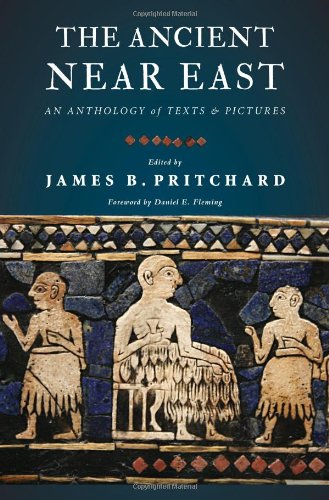I mentioned in an earlier post that in his book, Man and Woman, One in Christ, Philip B. Payne refuses to present the complementarian position in a way that complementarians would represent themselves.
This seems to be because Payne has so thoroughly rejected the complementarian position that he feels no need to argue against it as a complementarian would articulate it. Rather, he skips straight to judging complementarians by the standards of his own assumed conclusions. Blomberg notes, “Like Rebecca Groothuis, Payne finds the concept of functional subordination within ontological equality virtually non-sensical, so he doesn’t really consider it as an intermediate option.”[1] The problem with Payne not considering this option is that it is the position complementarians hold. Failure to deal with it is failure to engage the position as complementarians hold it. The result is that Payne’s arrows miss their targets.
Rather than dialoguing with those who disagree with him, Payne diatribes against a straw man of his own making. This can be seen in what appears to be Payne’s response to the complementarian assertion of functional subordination within ontological equality. He writes of Paul, “His praise of women coworkers in the gospel, as in Rom 16:1–16, shows that he was not content with lip service to the ontological equality of men and women while perpetuating social stratification by restricting special privileges to males” (86, italics mine). Payne thus does not grant complementarians the logic of their positions, nor does he describe the position he attacks in a way that a complementarian would. Instead he presents a caricatured straw man that, in his view, uses meaningless words (“lip service”) while perpetuating injustice.
Payne’s refusal to consider ontological equality within functional subordination—the idea that equals can and do embrace hierarchical roles—pushes him to a strained interpretation of 1 Corinthians 15:28, “When all things are subjected to him, then the Son himself will also be subjected to him who put all things in subjection under him, that God may be all in all” (ESV). Payne asserts, “Subordinationism also conflicts with Christ’s ontological equality with God the Father” (133). He then tries to show that “‘the God’ in 1 Corinthians 15:28 makes best sense as referring to the Godhead and, therefore, does not entail subordinationist Christology” (135). That is, rather than the verse saying that Christ will be subjected to the Father that God might be all in all, Payne wants to render the verse “so that the Godhead may be all in all” (134) to avoid the notion that the Father is in view. Earlier in the verse, however, Paul referred to “the Son himself” being “subjected to the one who subjected all things to him,” and this is following verse 24’s reference to the end, “when [Christ] delivers the kingdom to God the Father . . .” (1 Cor 15:24). Thus, not only does Payne’s refusal to consider ontological equality with functional subordination cause him to treat complementarians unfairly, it forces him into yogic postures as he tries to deal with 1 Corinthians 15:28.
Payne comes close to accusing complementarians of heresy. Asserting that complementarians “typically embrace and logically imply subordinationist Christology” (131), he relies on Kevin Giles (133 n. 85) as he contends that “subordinationist Christology has been regarded as heresy since the early creeds” (133). Rather than refer to complementarian interpretations as complementarian, Payne refers to them as “subordinationist” (e.g., 191, 196). As Craig Blomberg pointed out in his review of Payne,[2] and as Bruce Ware has demonstrated, the way that Giles selectively quotes relevant evidence undermines his conclusions. Ware in particular has demonstrated that while the early church did reject subordinationism, significant early figures affirmed what complementarians now refer to as ontological equality with functional subordination. The historical reality is nuanced, as is a correct understanding of the Bible. (See this page for many interactions with Giles).
Payne not only suggests that complementarians have embraced a heretical Christology, he almost indicates that one must be egalitarian in order to be Christian: “The nature of the gospel is incompatible with assigning privileges and special treatment only to members of particular groups, whether ethnic, economic, or by gender” (102). Again, “The eschatological new creation in Christ overcomes the barriers that excluded Gentiles, slaves, and women and grants them acceptance and full participation in God’s people” (104). These darts go wide of the mark: complementarians are not rejecting equality; we are trying to obey the Bible, and we are not satisfied with egalitarian attempts to remove role distinctions from the Bible.
There is more that could be said, but this post is long enough. Its point is to restate a truism: when we engage in these disputes, we must abide by the golden rule, representing the positions of others the way we want our own positions represented. Payne fails to show this courtesy to complementarians.
[1] Craig L. Blomberg, “Review of Man and Woman, One in Christ: An Exegetical and Theological Study of Paul’s Letters,” Denver Journal, February 5, 2010, http://www.denverseminary.edu/article/man-and-woman-one-in-christ-an-exegetical-and-theological-study-of-pauls-letters/.
[2] Ibid. Blomberg notes, “Mark Baddeley in a 2004 Reformed Theological Review article argues that Giles repeatedly misreads the patristic evidence, but Payne does not comment on this ‘refutation’.”


